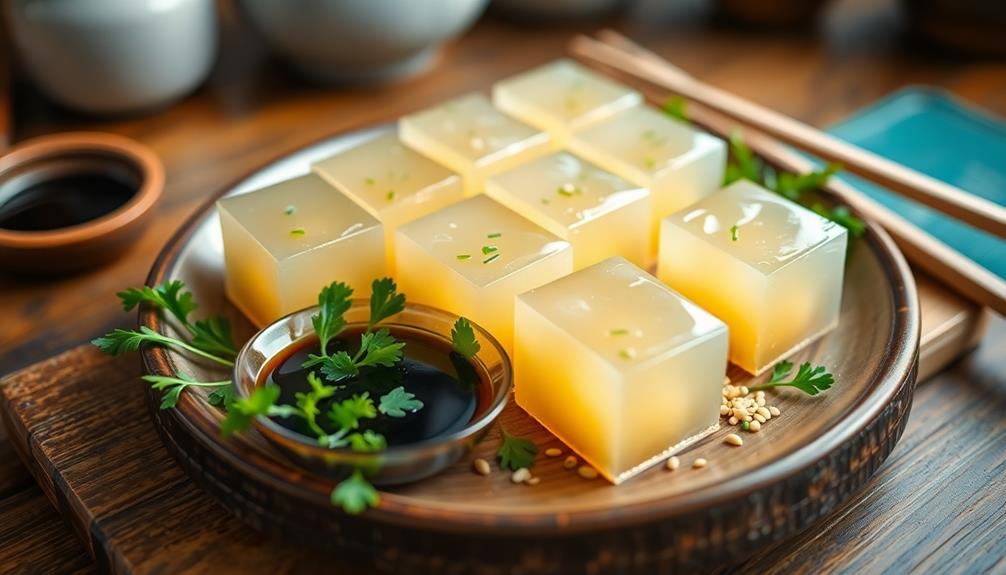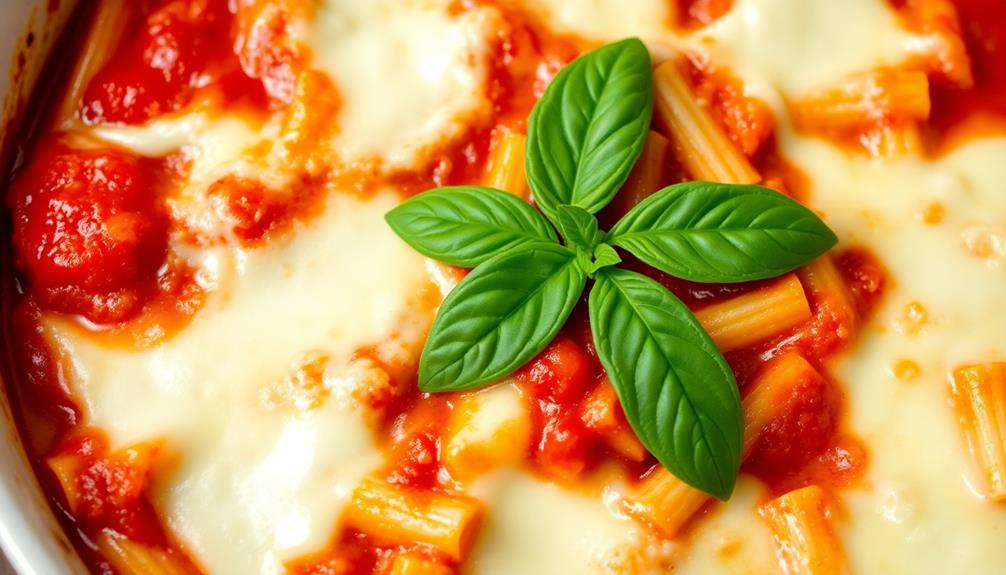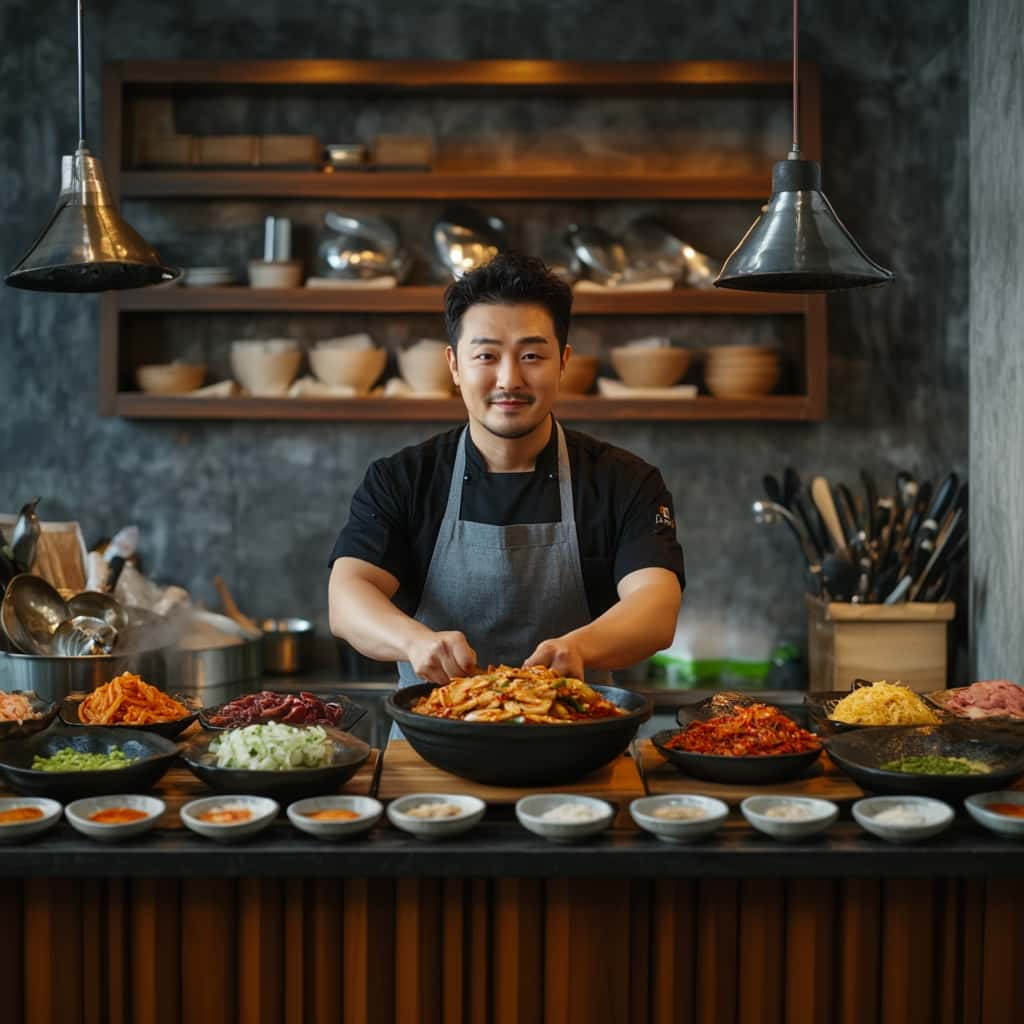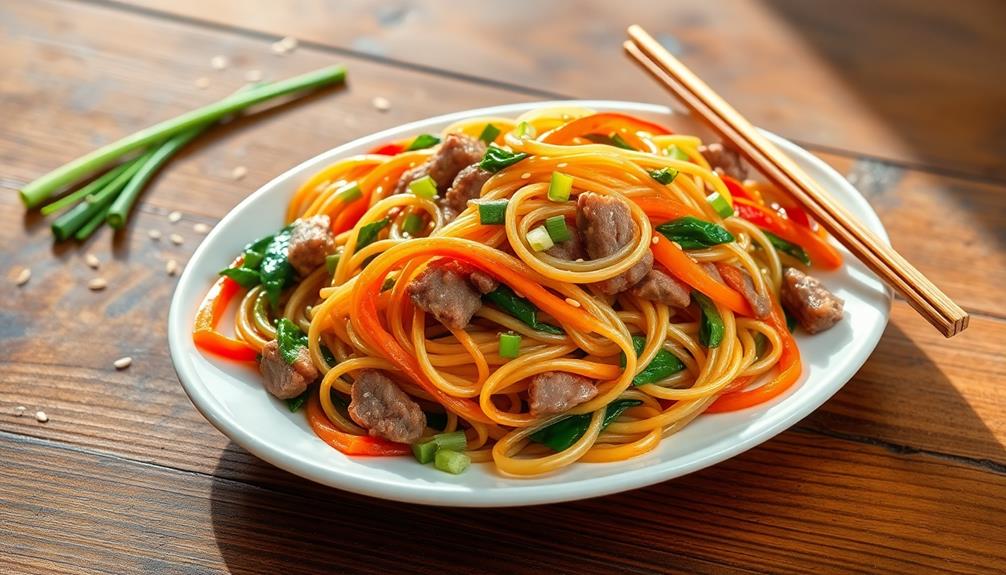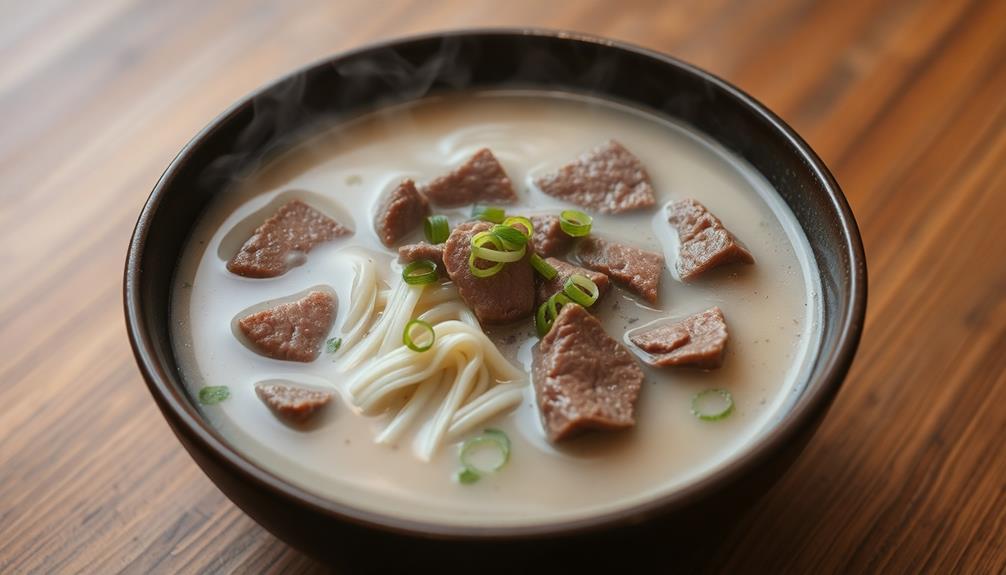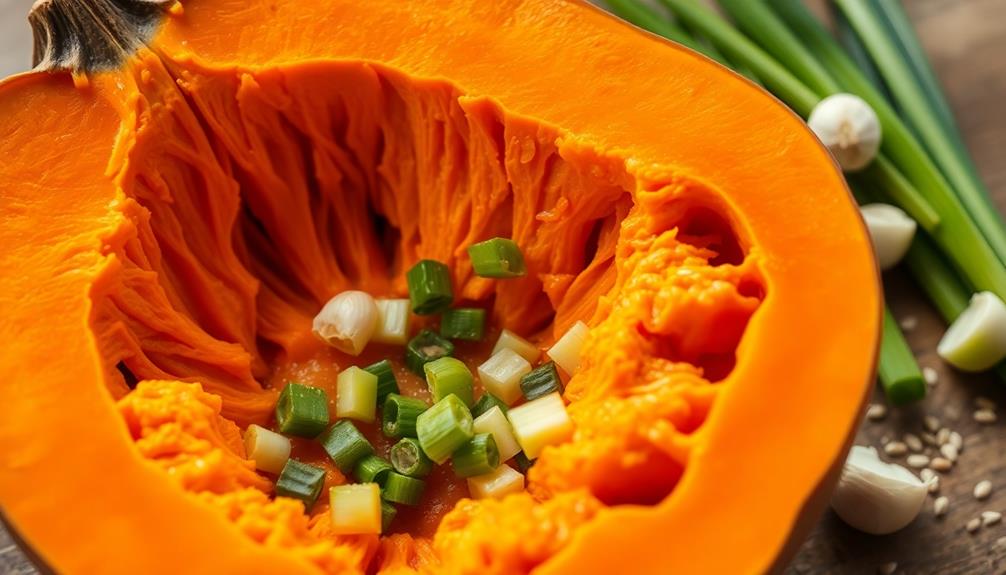Dotori Muk, or acorn jelly, is a super cool dish from Korea that's both tasty and healthy! Made from acorn flour, it has a nutty flavor and a fun, jelly-like texture. To whip it up, you soak acorns overnight, blend them, and then cook the mixture until it thickens. After pouring it into molds, you let it set. It's great served cold, especially with fresh veggies! This dish not only connects you to Korea's culinary history, but it's also low in calories and high in fiber. Want to uncover more about this yummy treat? There's so much to discover! Another popular Korean dish that you might want to try is the Korean beef tartare recipe. Known as yukhoe, this dish features raw beef seasoned with various ingredients like soy sauce, sesame oil, and pear. It’s a delicious and unique way to enjoy beef, and it’s often served with raw egg yolk on top. If you’re a fan of adventurous eating, this dish is definitely worth a try!
Key Takeaways
- Dotori Muk is a traditional Korean dish made from acorn flour, known for its nutty flavor and smooth, jelly-like texture.
- The dish has historical significance, symbolizing resourcefulness and connecting families through the gathering of acorns.
- Preparation involves soaking acorns, blending, straining, and cooking the mixture to achieve the desired consistency.
- Nutritionally, Dotori Muk is low in calories, high in fiber, and packed with antioxidants, making it a healthy option.
- It can be served cold with various dipping sauces and fresh vegetables, making it ideal for warmer months.
History
When you delve into the history of Dotori Muk, you'll find a fascinating blend of tradition and innovation. This tasty acorn jelly has roots that stretch back many centuries, especially in Korea, where it's been enjoyed since ancient times. People discovered that acorns, which are the seeds of oak trees, can be transformed into a delicious and nutritious dish. Isn't that cool?
In the past, families would gather to collect acorns, often spending weekends outdoors, enjoying nature together. They'd grind the acorns into flour, then mix it with water to create a jelly-like texture. Dotori Muk wasn't just a food; it was a symbol of resourcefulness! Imagine using something that falls from trees to create a delightful dish.
As time went on, people began to experiment more, adding various flavors and ingredients, making it even more exciting.
Today, you'll find Dotori Muk served in restaurants and homes, often enjoyed with spicy sauces or warm broth. It's a perfect example of how food can connect us to our past while still being a fun treat to eat today.
Recipe
Dotori Muk, or acorn jelly, is a traditional Korean dish made from acorn flour, which is known for its nutty flavor and rich nutritional profile. This unique dish is often served as a refreshing side or a light main dish, particularly during the warmer months.
The smooth, jelly-like texture of Dotori Muk makes it a delightful addition to salads or can be enjoyed simply with a soy sauce or sesame oil dip.
To prepare Dotori Muk, you'll need a few key ingredients and some patience, as it requires proper cooking and cooling to achieve the right consistency. The process involves combining acorn flour with water, cooking it until it thickens, and then allowing it to set.
Once prepared, Dotori Muk can be garnished with various ingredients like vegetables or sesame seeds, adding flavor and color to the dish.
Ingredients:
- 1 cup acorn flour
- 3 cups water
- 1 tablespoon salt
- 1 tablespoon soy sauce (for dipping)
- 1 teaspoon sesame oil (for dipping)
- Optional toppings: sliced cucumber, shredded carrots, sesame seeds, chopped green onions
Cooking Instructions:
In a medium saucepan, combine the acorn flour and salt with 3 cups of water, whisking until there are no lumps.
Place the saucepan over medium heat and stir constantly until the mixture begins to thicken and bubble, which should take about 10-15 minutes.
Once thickened, pour the mixture into a lightly greased rectangular dish and smooth the top with a spatula. Allow the mixture to cool at room temperature for at least 1-2 hours or until completely set.
Extra Tips:
For best results, choose high-quality acorn flour, as the flavor can vary significantly.
You can experiment with the thickness of the jelly by adjusting the water-to-flour ratio; less water will yield a firmer texture.
Additionally, Dotori Muk can be served cold, making it an excellent dish for hot days. Serve it with a variety of dipping sauces and fresh vegetables for added taste and nutrition.
Cooking Steps
Now that you've got your acorns ready, it's time to jump into the cooking steps!
First, you'll soak those acorns overnight, which helps soften them up for blending.
Once that's done, you can blend the acorn mixture smoothly, strain it through cheesecloth, and heat it until it thickens—then pour it into molds to create your delicious Dotori Muk!
Step 1. Soak Acorns Overnight
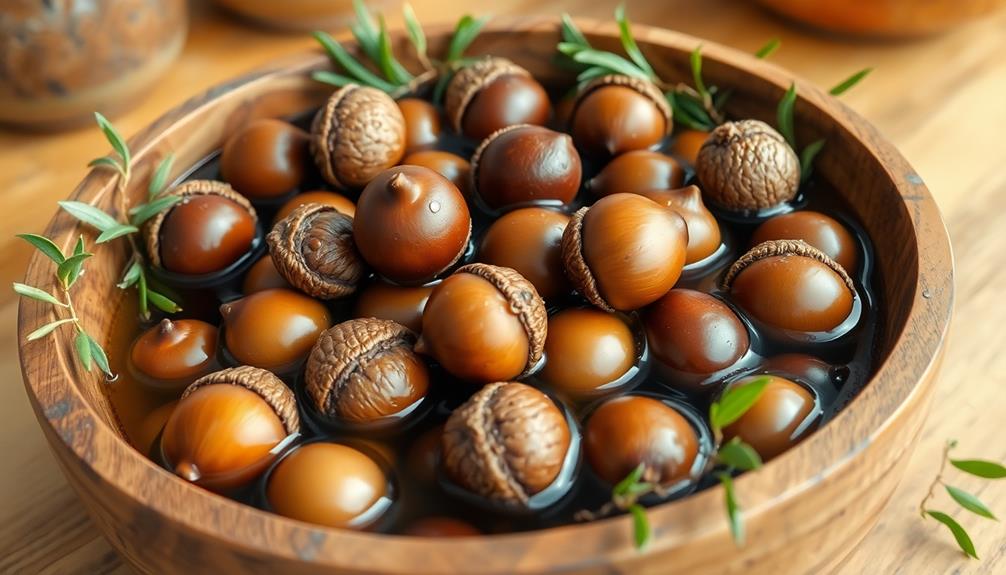
Soaking acorns overnight is a crucial step in preparing them for cooking, as it helps to leach out the tannins that can impart a bitter taste. By doing this, you'll make your acorns much tastier and more enjoyable to eat.
Start by gathering fresh acorns, making sure to pick ones that are free of cracks or mold. Once you've got a good batch, rinse them under cold water to remove any dirt.
Next, it's time to soak! Place the acorns in a large bowl and cover them with plenty of water. You want to make sure they're completely submerged. If they float, you can weigh them down with a plate or a glass.
Let them soak overnight, and while you sleep, those tannins will be busy escaping into the water.
In the morning, drain the water and give the acorns another rinse. You'll notice the water may be a bit murky—don't worry! That's just the tannins leaving your acorns, and now they're ready for the next step in your cooking adventure.
Enjoy the process, and get excited for your delicious dotori muk!
Step 2. Blend Acorn Mixture Smoothly
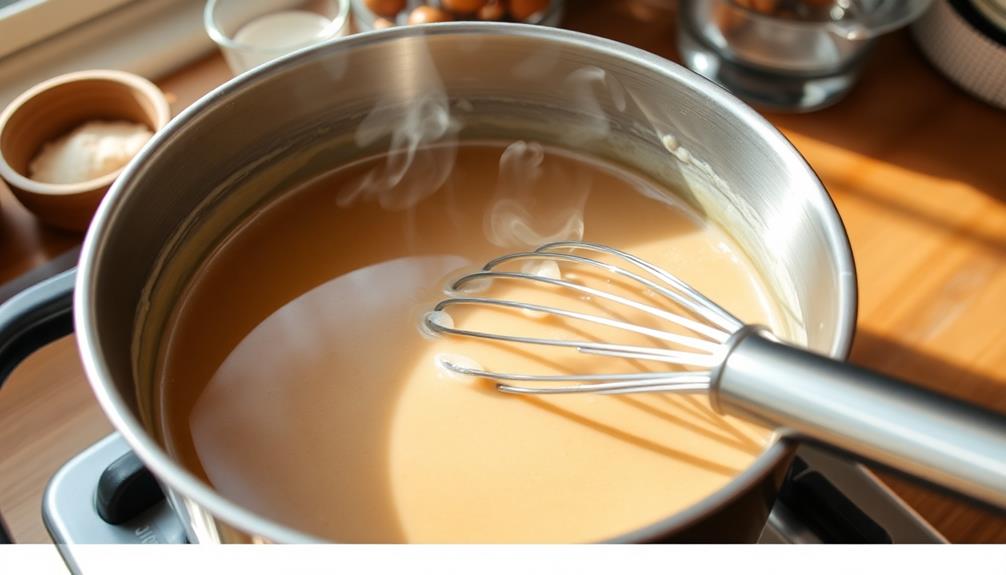
Once your acorns have been soaked and rinsed, it's time to blend the acorn mixture smoothly. First, gather your soaked acorns and place them in a blender. You might want to add a little water to help the blending process, making it easier for the blades to chop everything up.
Turn on the blender, and watch as those acorns transform into a creamy mixture! Don't forget to stop and scrape down the sides occasionally; you want every bit of acorn goodness to mix in.
Blend until the mixture is completely smooth, with no chunks left behind. This might take a minute or two, so be patient. You want that silky texture for your Dotori Muk, which will make it even more delicious.
If your blender struggles, don't hesitate to add more water, but keep it minimal—too much can make your final product less firm.
Once you've achieved a nice, smooth consistency, it's time to get ready for the next step in your acorn jelly adventure. Remember, blending is key, so have fun with it! You're one step closer to enjoying your homemade Dotori Muk!
Step 3. Strain Mixture Through Cheesecloth
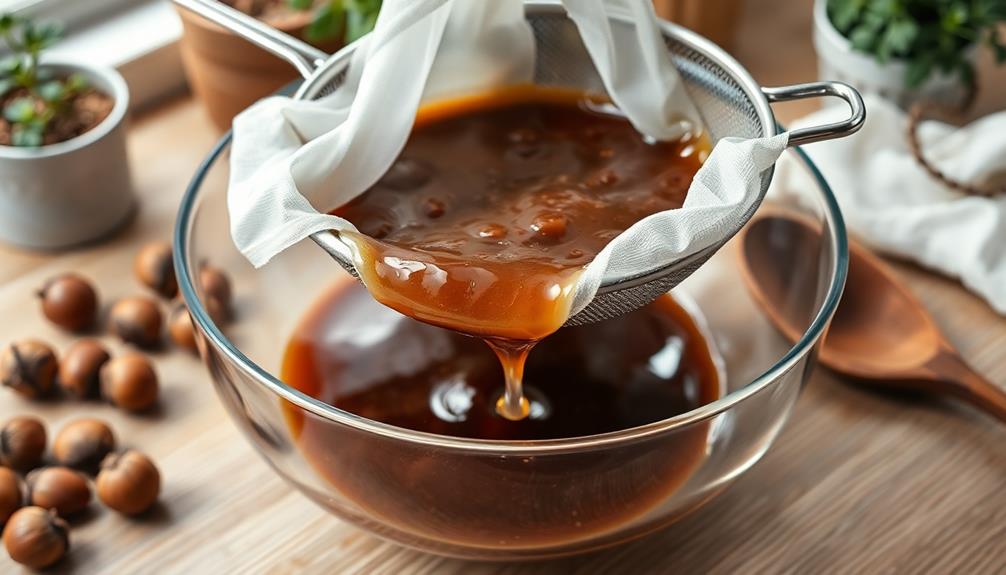
With your acorn mixture perfectly blended, the next step is to strain it through cheesecloth. This important part helps you get rid of any lumps, making your jelly smooth and tasty.
So, grab a large bowl and place a piece of cheesecloth over it. Make sure the cloth hangs over the sides a bit; it'll help you later when you're ready to lift it out!
Now, carefully pour your blended acorn mixture onto the cheesecloth. As the liquid seeps through, you'll see the bits that you don't want getting caught in the cloth. It's like a magic trick—watch the smooth goodness flow down!
Once you've poured it all in, gather the edges of the cheesecloth and twist it to squeeze out every last drop. You don't want to leave any delicious flavor behind, right?
When you're done, you might find some leftover bits in the cloth—just toss those out.
Now, you've got a beautiful, smooth mixture ready for the next step in your Dotori Muk adventure! Keep up the great work; you're almost there!
Step 4. Heat Mixture Until Thickened
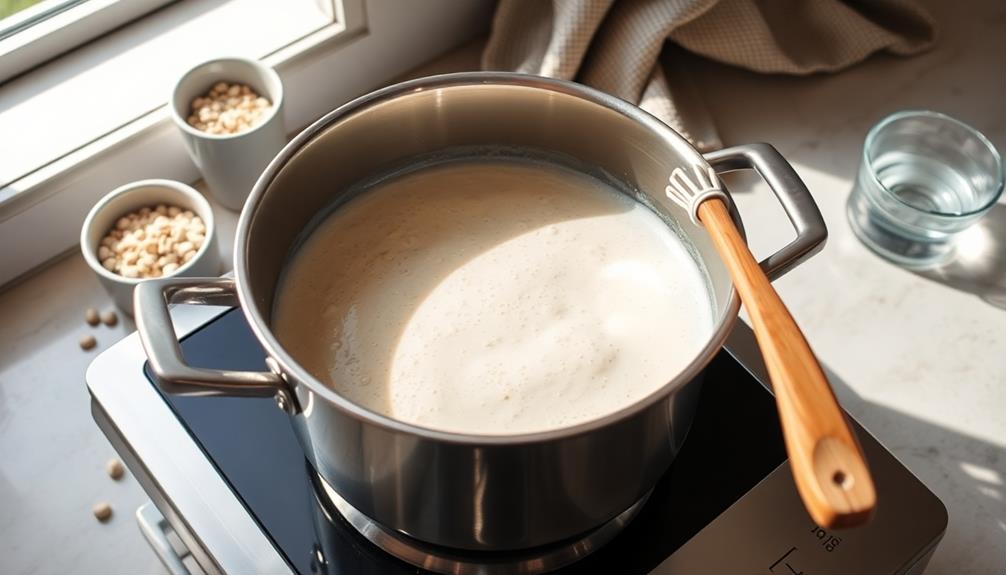
Now that you have your smooth acorn mixture ready, it's time to heat it until thickened. First, pour your mixture into a pot over medium heat. Stir it gently but constantly with a wooden spoon. This is important, because if you don't stir, it might stick to the bottom and burn—yikes!
As you stir, you'll notice the mixture starting to bubble. Keep an eye on it, and don't get distracted! After a few minutes, it will begin to thicken, turning into a gooey, jelly-like consistency. You want it to be thick enough to hold its shape, but not so thick that it becomes a solid lump.
This process usually takes about 10 to 15 minutes, so be patient, and keep stirring! If it starts to look really thick, give it a quick taste. It should be smooth and a bit earthy from the acorns.
Once it reaches the right thickness, turn off the heat. Congratulations, you've just transformed your acorn mixture into a delightful jelly! Get ready for the next step, because you're almost there!
Step 5. Pour Into Molds

It's time to pour your thickened acorn jelly into molds for shaping. Grab your clean molds, and make sure they're ready to hold that delicious jelly you've just created!
Gently ladle the thickened mixture into the molds, filling them about three-quarters full. You don't want to overflow them, or you'll have a jelly mess on your hands—and no one wants that!
As you pour, take your time and enjoy the process. It's like crafting little jelly treasures! If you notice any bubbles forming on the surface, simply tap the molds lightly on the counter. That'll help the bubbles escape and give you a smoother finish.
Once you've filled all your molds, give them a little shake to settle the jelly.
Now, it's time to let the acorn jelly cool and set. You can place the molds in the refrigerator for a quicker setting, or leave them at room temperature if you've got the patience.
After a few hours, your jelly will be ready to pop out and enjoy! Just flip the molds upside down and give them a gentle squeeze. Voilà! You've made acorn jelly—now, dig in and savor the unique flavors!
Final Thoughts
As you reflect on Dotori Muk, it's clear that this unique concept offers valuable insights into cultural traditions and modern interpretations.
This delightful acorn jelly isn't just a treat for your taste buds; it also connects you to the rich history of Korean cuisine. You might find it fascinating how something so simple can have deep roots in tradition, showing how people have made the most of local ingredients for generations.
Creating Dotori Muk can be a fun adventure! You get to explore the textures and flavors that make it special.
Whether you enjoy it as a snack or a side dish, you can share it with family and friends, sparking conversations about food and culture. Plus, it's healthy and full of nutrients!
Frequently Asked Questions
What Are the Nutritional Benefits of Dotori Muk?
You'll find that many foods offer various nutritional benefits, like fiber, vitamins, and minerals. Exploring the right options can enhance your diet, supporting digestion, energy levels, and overall health while keeping your meals interesting.
Can Dotori Muk Be Served Cold or Hot?
You can serve it cold or hot, depending on your preference. Heating enhances its flavor, while serving it cold can create a refreshing dish. Experiment with both methods to find what you enjoy most.
How Long Can Dotori Muk Be Stored?
You can store it in the refrigerator for up to a week. If you freeze it, it can last for several months. Just remember to keep it sealed to maintain its texture and flavor.
Are There Any Common Allergens in Dotori Muk?
When considering common allergens, you should know that dotori muk is primarily made from acorns. It's gluten-free and generally safe, but if you have nut allergies, it's wise to exercise caution before trying it.
What Beverages Pair Well With Dotori Muk?
When enjoying this dish, you'll love pairing it with a light herbal tea or a crisp white wine. Sparkling water adds a refreshing touch, balancing flavors and enhancing the overall dining experience. Enjoy!
